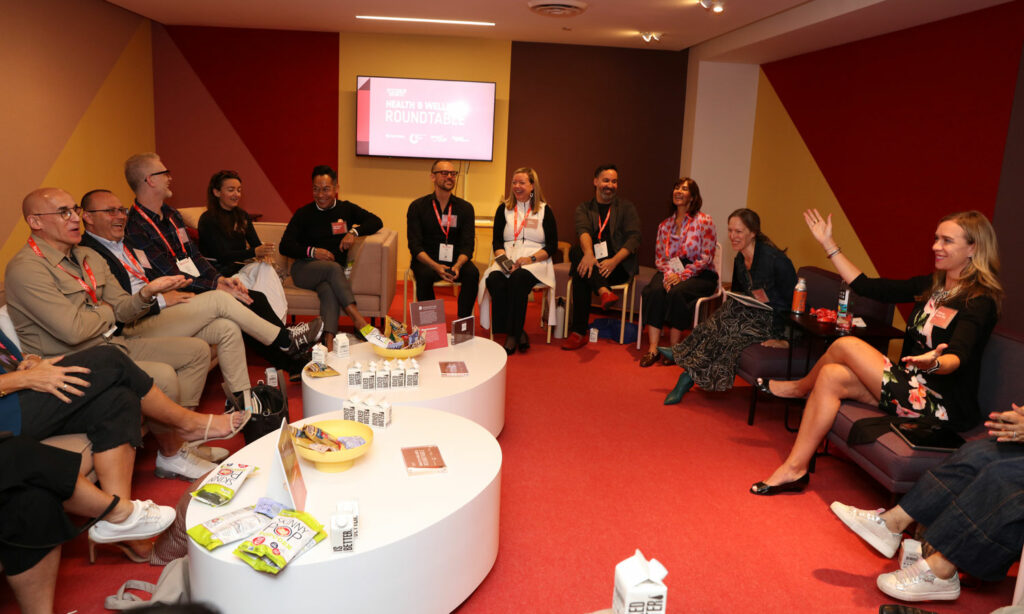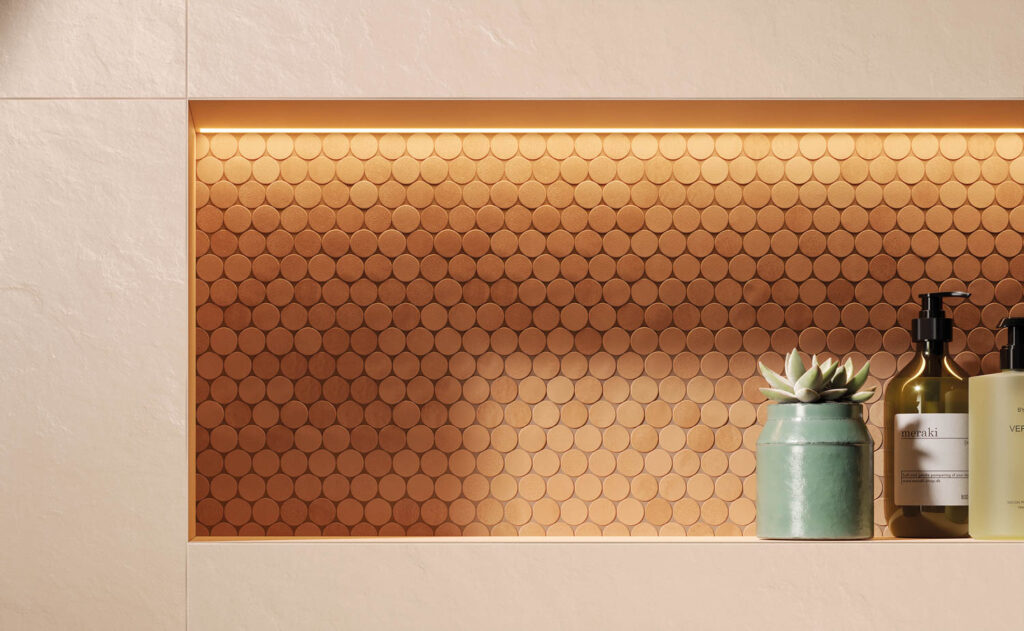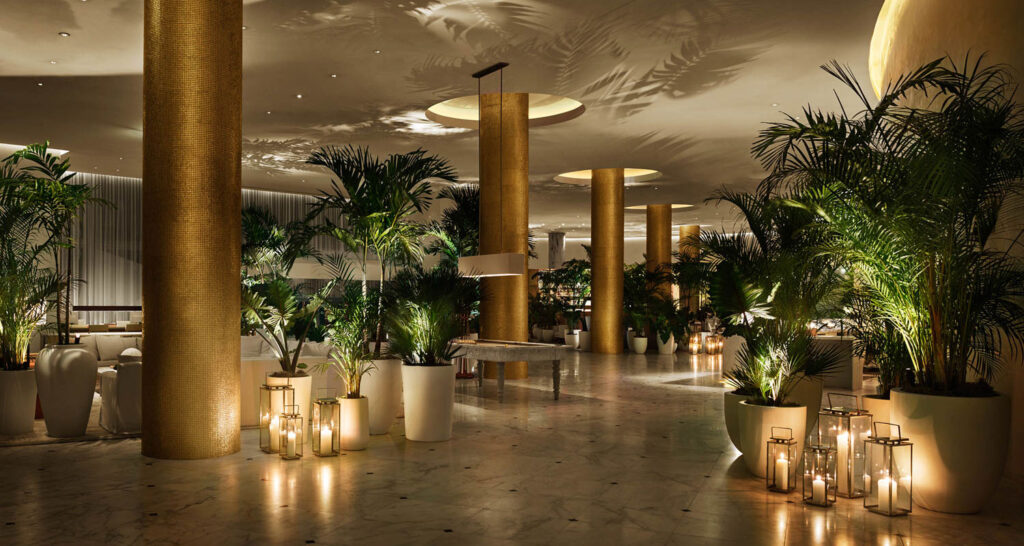When it Comes to Wellness, Innovation is Key Designers Say During NeoCon
Emotional wellbeing. Belonging. Sanctuary. These words, ripe with meaning, were shared by designers and manufacturers at the start of Interior Design‘s Health and Wellness roundtable at NeoCon June 11, speaking to what’s top of mind for those working in the sector. Hosted by Jen Renzi, Interior Design executive editor, and Whitney Gray, SVP of research at the International Well Building Institute, the group shared insights into the type of radical thinking needed to push the industry forward.
Much of the discussion involved fresh ideas around how and where to work. “We need alternate postures in the workplace,” offered one attendee, noting that the only options typically offered to employees are to sit in a chair or stand. “What about sitting on the ground? Can we create spaces for different seasons of life?” Similarly, one designer, who recently left a job that no longer felt aligned and started her own studio, shared that she feels called to work in the woods, close to nature.
Regardless of where a workplace is located, it must meet the varied needs of those within it, which presents challenges and opportunities when it comes to design “How is a building talking and listening to you?” asked Gray, noting that data about how people are using a space is a vital element of shaping it. “There are new ways to capture information but we need to be thoughtful about it.”
Designers Share Insights into Creating Environments That Foster Wellbeing

Certifications like LEED and WELL are one way designers can offer assurance, especially for those with various health needs. But the roadmap for achieving such stamps of approval is not always easy. Knowing this, Gray stressed the value of connecting with clients to understand what’s most important to them. From air and water quality to natural light, there are countless ways into designing for wellness.
As for health-centered spaces, like hospitals, there’s an increasing focus on designing pre-burnout recovery spaces for staff. “The pandemic really shifted that,” offered one designer, noting that previously, nurses and healthcare workers often found respite in small break rooms with little or no natural light. “We’re entering a new era of work,” Gray asserted, noting a broader cultural shift is underway post-pandemic.
Defining a New Era of Work Across Generations
Younger members of the workforce are helping define what this “new era” looks like. “Gen Z is all about decolonization and nocturnal living,” said one designer. “We need to continue to test and play [with design] because if you don’t believe in you in you, clients won’t believe in you.” Others in the room agreed, noting that enabling people to bring their “whole self” to the office is an important element of cultivating community. This also extends to those at or nearing retirement age. One attendee noted that some universities are creating programs for people over the age of 60, enabling them to pursue new skills and knowledge after leaving their careers. “We have to start being better about building inclusive environments in every direction—getting people to acknowledge there is knowledge and respect around older generations and that they need to respect younger generations as well.”
Ultimately, designing spaces for wellbeing comes back to the idea of connection. “We evolved in community, we don’t survive well in isolation,” offered Gray, pointing out that people can feel as isolated in a busy workplace as at home alone. To address this issue, research around safety offers helpful clues. “We have a heat map of belonging in Higher Ed because we’ve asked students to identify where on campus they feel safe,” shared one attendee.
Whether creating an office, educational facility, or a space for incarcerated individuals, designers agreed that building community is paramount. “How do we create a destination that accommodates all of their needs, realizing were doing something beyond creating a juvenile justice center—we’re servicing an entire community,” shared a designer working with incarcerated people. Adding to this point, Gray jumped in, stating that the way these projects are viewed also needs to shift away from a “problem to solve pathology.” “There’s so much to uncover when we look at vulnerabilities,” she said.
Positing Solutions for Health and Wellness Design
Designers agreed that designing for wellbeing touches all aspects of the built environment, from furnishings, to paint palettes, to invisible elements like air quality, which means there are countless opportunities to make a difference. “Products that have health impacts must be multi-disciplinary,” offered Gray, stating that thinking about big picture benefits will help achieve certifications like WELL. One example: “For flooring, does it also help sound?”
Another component involves educating general contractors to be better design partners, the group agreed. “GC partners dissect every finish and offer alternatives without our knowledge when they are seeing dollar savings,” shared one designer. “Without being educated on that, we are being forced into using specific products we may not specify otherwise.”
Creating safe and inviting spaces that enable people to feel at ease and foster connection has a direct correlation on human health, asserted Gray, stressing the value of health and wellness design. “Our environment dictates how long and how well we live,” she said, “Now it’s time to reimagine what’s next.”
A big thank you to our event partners: Crypton, Kimball International, The International Well Building Institute, Garden on the Wall, and KI.
read more
DesignWire
Top Tile Trends Spotted At Coverings 2025
Explore tile highlights from Coverings 2025, which hosted more than 1,000 exhibitors from 40 countries in Orlando, Florida earlier this year.
DesignWire
How The Power Of Design Reignites Classroom Engagement
Tune into this Once Upon A Project episode to learn how KI transforms educational spaces with well-designed environments and robust chairs.
DesignWire
10 Questions With… George Yabu And Glenn Pushelberg
The cofounders of Yabu Pushelberg keep breaking new ground, expanding into product design and art consulting with work that connects on a human level.


